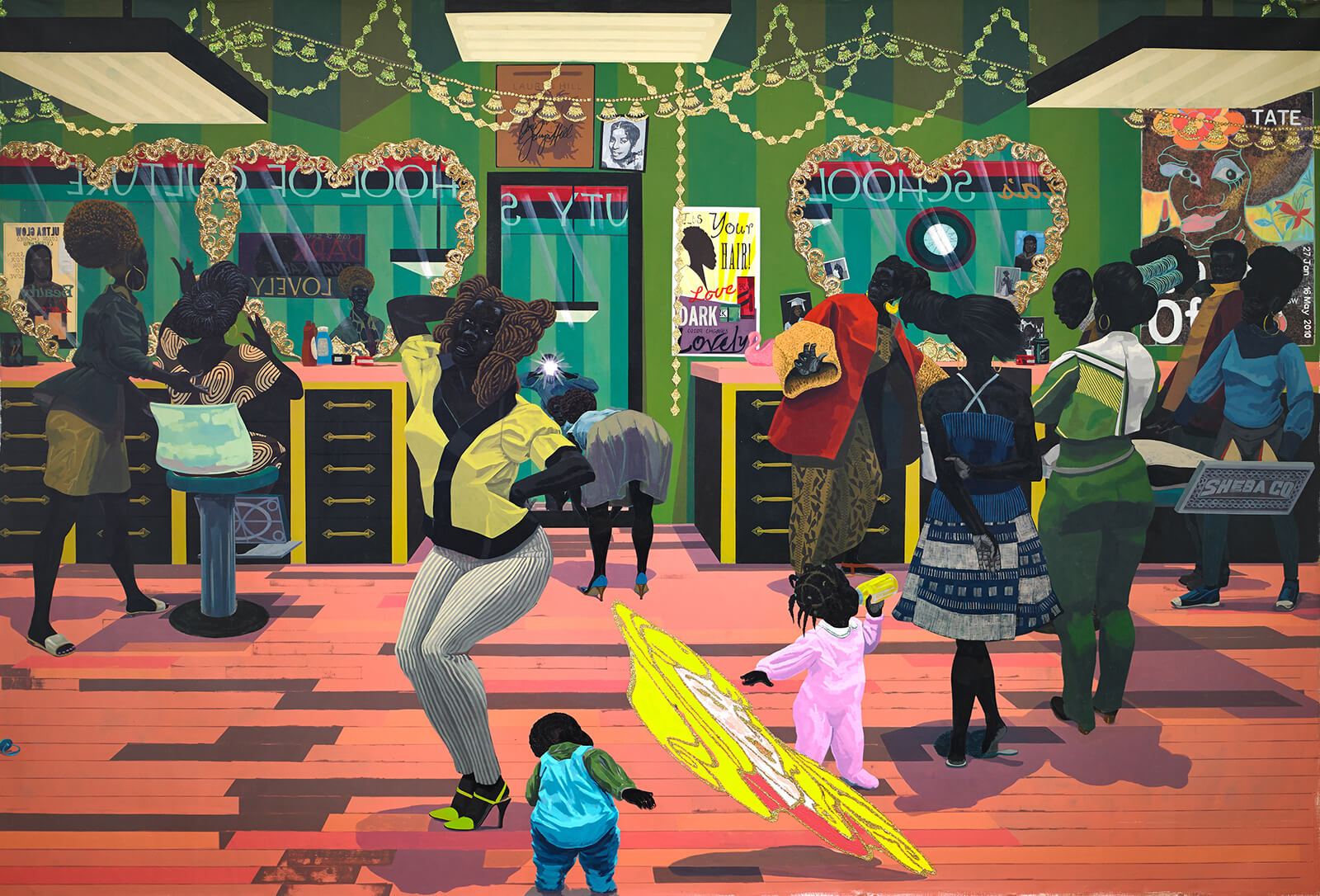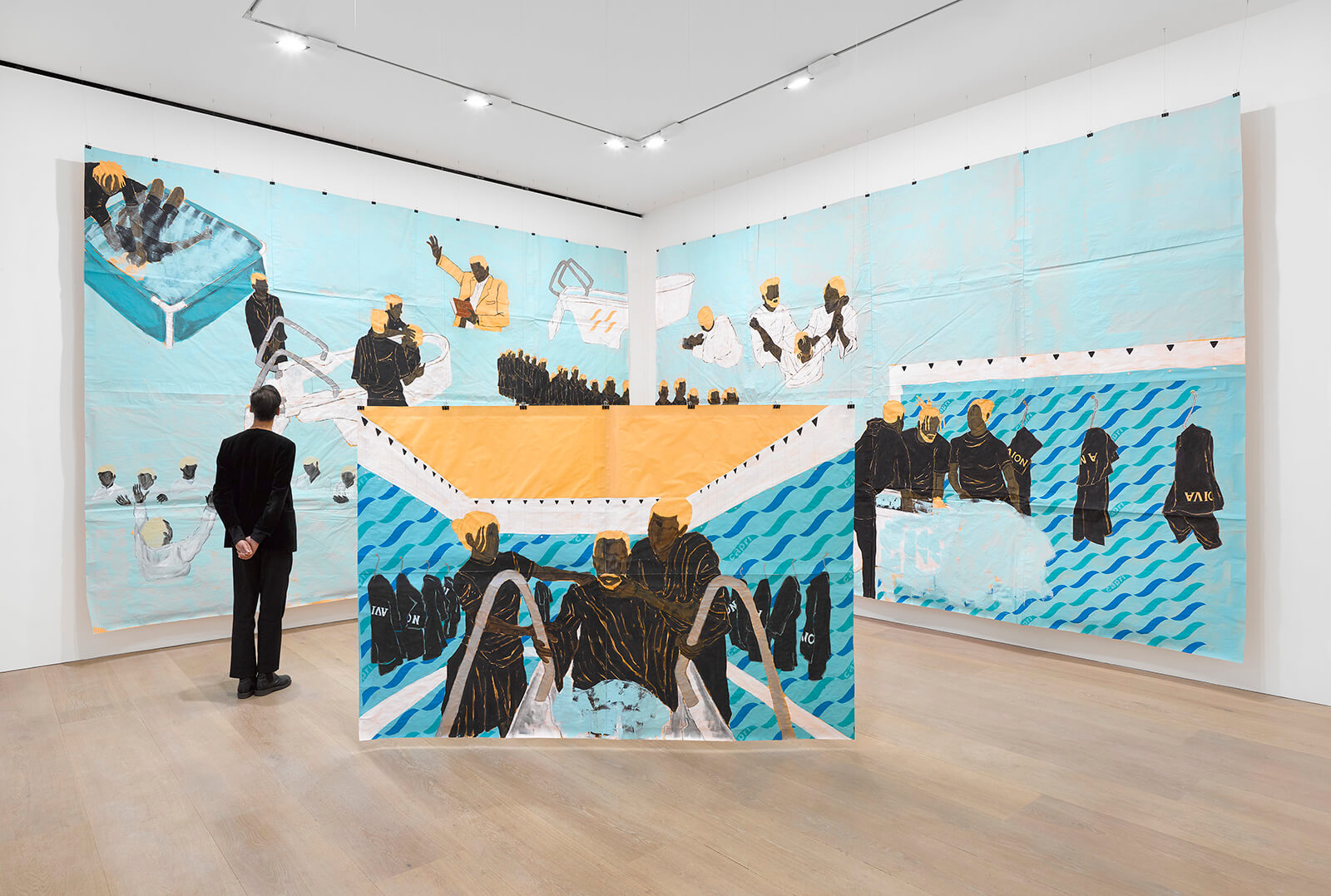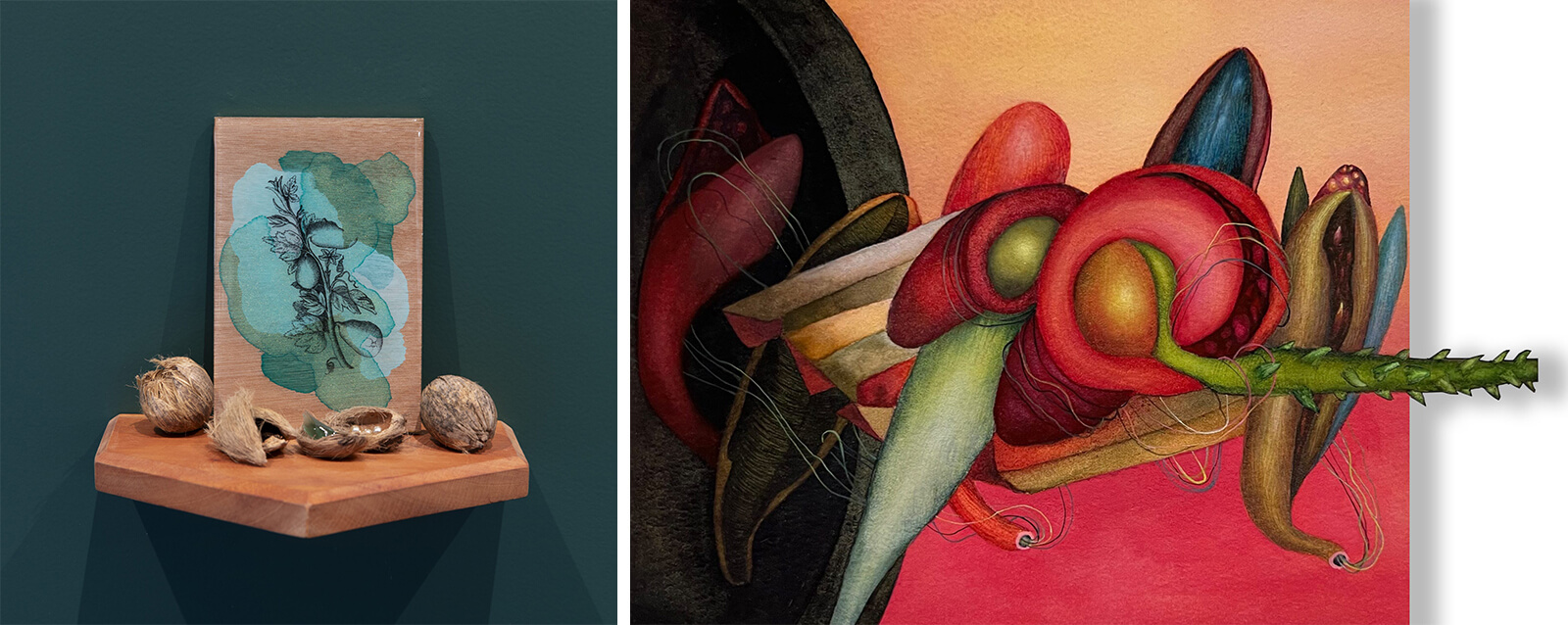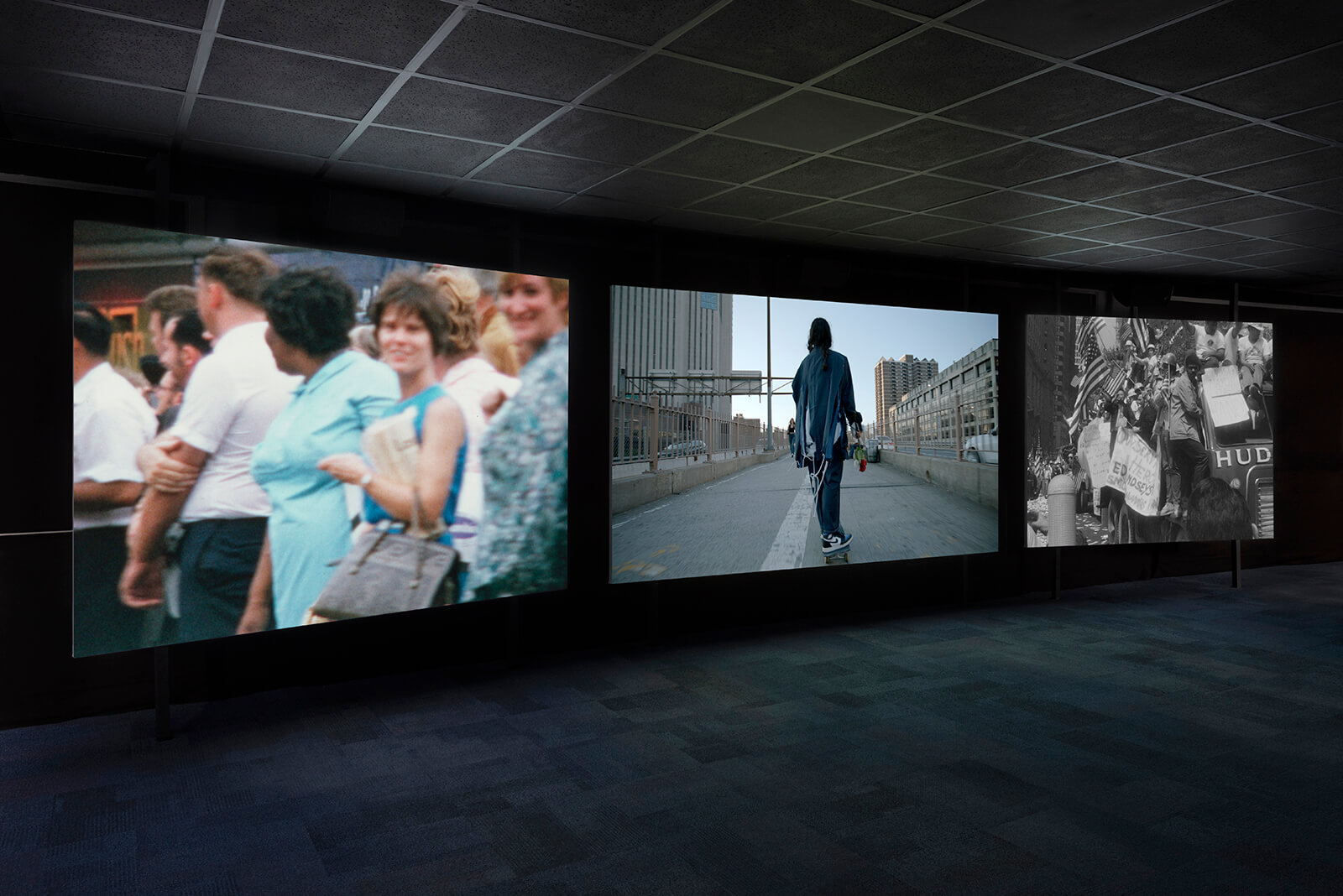A look at nine of the best London art exhibitions from 2023
by Tabish KhanDec 21, 2023
•make your fridays matter with a well-read weekend
by Maanav JalanPublished on : Oct 14, 2025
Ambitious shows of prominent international artists, many of them still considered ‘at the margins’ or ‘overlooked’, take centre stage at London’s institutions and arts non-profits this Frieze week. A critical mass seems to have been achieved out of individual curatorial initiatives geared towards better representing global art practices. Scanning the list of shows currently on view in the city, what is remarkable is not the artists’ marginality, but their role as pioneers in their regions.
On the agenda are mature practices as yet unrepresented in the UK’s public art space. In a severely underfunded UK public arts context, this focus on international art promises to not only break the monotony of well-rehearsed names but also perhaps tap into new geographical hotbeds of arts patronage. Regardless, the offer to visitors flying into London for the two Frieze fairs is a broadcast of historic and contemporary global stories, from authorities rooted in and working through their local contexts.
Two new private arts institutions, Ibraaz and Yan Du Projects, opened in central London this week, focusing on artists from the ‘global majority’ and the Asian diaspora, respectively. Ibraaz, led by Lina Lazaar and the Kamel Lazaar Foundation, known for initiating the contemporary art biennial in Tunisia, Jaou Tunis, is housed in a historic mansion, previously a clubhouse for German artists. A site-specific installation by Ghanaian artist Ibrahim Mahama reimagines the ground floor of the building as a tiered parliament hall, with repurposed colonial-era chairs upholstered with Western African textiles. Drawings, schematics and a poem by the architect-in-residence Sumayya Vally snake through the corridors and staircase. A library, curated by The Otolith Collective, on the second floor, gives context to the intellectual and art history that grounds the space’s vision.
Not far away, Yan Du Projects, housed in a historic 18th century townhouse, is conceptualised by the founder-director of Asymmetry Art Foundation, Yan Du, as a ‘suitcase project’, a nomadic home for artists from Asia and its diaspora. The inaugural exhibition is by Chinese painter Duan Jianyu, known for her narrative, often-surreal depictions that connect mundane details of everyday life with their mythic and historic dimensions. The exhibition takes the classical Chinese motif of the Yúqiáo, a fisherman and a woodcutter and transforms them into a shape-shifting cast of characters, including goats, cows, a black cat detective and the artist herself.
At Tate Modern, Nigerian Modernism surveys over 50 artists with over 250 works that chart the proliferation of modernist ideas and aesthetics in Nigeria in the 50-year or so period spanning indirect colonial rule to national independence and beyond. Academic portraits of the Nigerian elite by Aina Onabolu, the first Nigerian artist to receive a formal arts education and a room full of works by Uzo Egonu, reflecting on the growing visibility of Nigeria’s global diaspora, bookend the exhibition. Over its course, we see individual artists, collectives and schools make visual discoveries, inspired by indigenous tradition, political change and adjacent artistic developments in theatre, literature and music.
A solo exhibition by the late Australian Aboriginal artist, Emily Kam Kngwarray, opened at Tate Modern earlier in the summer. Among her prolific and progressively exuberant paintings, a film with personal testimonies by her peers still working and living in the Sandover region of northern Australia is screened in a central gallery of the exhibition. This is an effort to contextualise Kngwarray’s work within its own paradigm and an attempt to remedy extractive narratives and practices historically applied to Aboriginal artists by both commercial and non-profit sectors.

The Royal Academy of Art is an appropriate home for a monumental retrospective of paintings by the American artist, Kerry James Marshall, titled The Histories. Room after room of large-scale works reappropriate tropes of European art history for Black people and black skin. Among the many delights of the exhibition are Marshall’s barbershop scenes, rendered on epic scale, his distorted portraits of the American presidents George Washington and Thomas Jefferson and the frequent gold glitter embellishment on works, inspired by greeting cards.

At the residency space a stone’s throw from Buckingham Palace, Delfina Foundation, Brazilian artist Maxwell Alexandre has been commissioned to create a new aspect of his best-known Pardo é Papel series, portraits celebrating Black cultural icons on brown kraft paper, commonly referred to in his native Portuguese as pardo. Here, he stages the basement gallery as the Clube de Regatas do Flamengo, a prestigious multi-sports club in Rio de Janeiro, sharply observing its mostly white, upper-class members in various poses of relaxation and watchful anxiety.
Collage becomes the material metaphor to think through history and its gaps at Autograph, a London photography gallery exploring race and identity since 1988. In a dense photomontage including a rescued, injured Cormorant by Iran-born artist and wildlife rehabilitator Sheida Soleimani, we find squares of the backdrop cut away. Woven paper strips in a work by Indian artist Arpita Akhanda interrupt a family photograph in the warp with a geographical map in the weft. A large-scale wallpaper by Lesotho-born artist and lawyer, Thato Toebare, tells the story of Ernesto Alfabeto Nhamuave, a Mozambican man burned to death in Johannesburg in 2008, during a wave of xenophobic violence, through archival images inserted into one another’s outlines.

Drawing Room in South London, known for expanding the boundaries of its namesake medium, is hosting a collaborative exhibition (curated by Natasha Ginwala) with Colomboscope, ahead of the upcoming edition next January. Among works by the 13 artists with ancestries across South Asia, Africa and the Caribbean are those by Mauritius-born Shiraz Bayjoo and Sri-Lanka-born Rupaneethan Pakkiyarajah. The former’s Botanical Shrines adorn paintings of plant specimens with doilies, shells and chains and other objects of domestic reverence and the latter’s painting-installation references both the structure of microorganisms and the landscapes that have gone through war.

Besides, at the moving image space ArtAngel, Naeem Mohaiemen’s new three-channel film, THROUGH A MIRROR, DARKLY, mixes archival and new footage to explore the US anti-war activism of the 1970s.
These exhibitions at the city’s art institutions can be considered one backdrop (among many) for the Frieze fairs with galleries from 43 countries, making the city, as the fairs’ press release declares, “a global art stage”. Visitors to the fairs can continue in the vein of the above exhibitions, with some promising presentations including textile works by Indigenous artist Claudia Alarcón and the Argentina-based Silat collective at Cecilia Brunson Projects, large paintings by T. Venkanna in the Artist to Artist section and bronze sculptures by the Bangladeshi modernist Novera Ahmed at Jhaveri Contemporary’s Frieze Masters stand. The exhibitions and presentations come with new communities of artists, researchers, gallerists and patrons to London—an expansion of not just the canon, but the arts ecosystem and market.
by Shaunak Mahbubani Oct 13, 2025
Collective practices and live acts shine in across, with, nearby convened by Ravi Agarwal, Adania Shibli and Bergen School of Architecture.
by Srishti Ojha Oct 10, 2025
Directed by Shashanka ‘Bob’ Chaturvedi with creative direction by Swati Bhattacharya, the short film models intergenerational conversations on sexuality, contraception and consent.
by Asian Paints Oct 08, 2025
Forty Kolkata taxis became travelling archives as Asian Paints celebrates four decades of Sharad Shamman through colour, craft and cultural memory.
by Srishti Ojha Oct 08, 2025
The 11th edition of the international art fair celebrates the multiplicity and richness of the Asian art landscape.
 surprise me!
surprise me!
make your fridays matter
SUBSCRIBEEnter your details to sign in
Don’t have an account?
Sign upOr you can sign in with
a single account for all
STIR platforms
All your bookmarks will be available across all your devices.
Stay STIRred
Already have an account?
Sign inOr you can sign up with
Tap on things that interests you.
Select the Conversation Category you would like to watch
Please enter your details and click submit.
Enter the 6-digit code sent at
Verification link sent to check your inbox or spam folder to complete sign up process



by Maanav Jalan | Published on : Oct 14, 2025
What do you think?